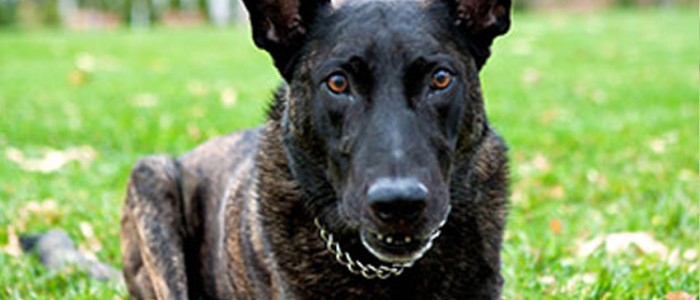The Dutch Shepherd – Loyal and Reliable
History
The Dutch Shepherd was discovered as a naturally occurring shepherd’s dog type living in the rural areas of the larger region that today includes The Netherlands. When the first breed standard was written in 1898, the coat could be any color. But in 1914 it was decided to allow only brindle to distinguish the breed from the, then similar, German Shepherd and Belgian Shepherd. As time went by, the breeds diverged into the three distinct breeds that we know today. However, the Dutch Shepherd remains nearly the same dog it was more than 100 years ago. Today the Dutch Shepherd is distinguished from the Belgian and German Shepherds by the details put down in the breed standard, primarily of the head.
Appearance
A medium-sized, medium weight, well-proportioned, well-muscled dog of powerful, well-balanced structure, with intelligent expression and lively temperament. Depending on the coat the breed is distinguished in the following varieties: short-hair, long-hair, and rough-hair.
Coat Varieties
Short-hair: All over the body, quite hard, close-fitting, not too short coat with woolly undercoat. Ruff, breeches and tail plume are clearly visible. Long-hair: All over the body, long, straight, well fitting, harsh to the touch, without curls or waves and with a woolly undercoat. Distinct ruff and breeches. Tail abundantly coated.
Temperament
Very loyal and reliable, always alert, watchful, active, independent, with persistence, intelligence, prepared to be obedient and gifted with the true shepherding temperament. The Dutch Shepherd Dog works willingly together with its owner and he deals independently with any task which is assigned to him. He is neither aggressive nor shy.
He has a strong character and independence passed down from his herding ancestry. In the Dutch Shepherd we have the combination of a “nice housedog” and “afraid of nothing and nobody”, therefore the owner needs to be a strong and fair leader. While there is a potential for doing police work, care should be taken that it is not the sole purpose of the dog overshadowing its overall character.
While there is no perfect dog for everybody, the Dutch Shepherd needs an active life and an owner willing to make a commitment of proper socialization and training.
 0408 710 005
0408 710 005
